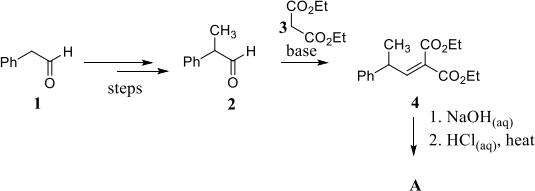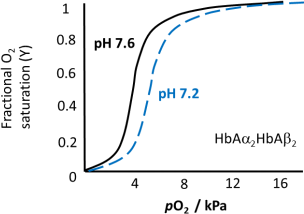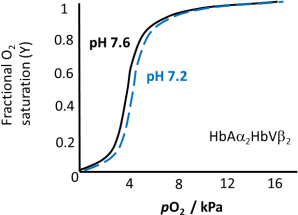CHE00016I Core 4a: Molecules in Action 2020-21
Hello, dear friend, you can consult us at any time if you have any questions, add WeChat: daixieit
CHE00016I
BSc Chemistry and MChem Degree Examinations 2020-21
Chemistry
Core 4a: Molecules in Action
Section A
Answer Question 1
Question 1 - start each question on a new page.
(a) Aldehyde 1 can be methylated to give 2, which is then further elaborated to form 4
using diester 3.

(i) Give suitable reagents for the conversion of 1 into 2 and draw a curly arrow (4)
mechanism for the reactions involved.
Note: more than one step is required.
(ii) Giving your reasons, identify a suitable base for the deprotonation of 3. Draw (4)
a curly arrow mechanism for the conversion of 2 into 4 using deprotonated 3.
(iii) Give a structure for compound A. (1)
(b) Treatment of dione 5 with NaOH gives two possible ring-containing products, 6 and B.

(i) Draw a curly arrow mechanism for the formation of 6 from 5 and give the (3) structure of the theoretically possible alternative 8-membered ring product, B.
(ii) Outline briefly why 6 is the sole product formed in this reaction. (2)
(c) Give a full retrosynthetic analysis to show how 7 can be synthesised from 8, 9 and 10. (6)
Using your retrosynthesis, show a forward synthesis giving suitable reagents for each step.

![]()
Section B
Answer TWO questions from this section
Question 2 - start each question on a new page.
The DNA sequence encoding the C-terminus of the human hemoglobin ![]() -chain (HbA
-chain (HbA![]() ) is shown below, together with the corresponding sequence ofa variant
) is shown below, together with the corresponding sequence ofa variant ![]() -chain (HbV
-chain (HbV![]() ) identified in a patient with breathing difficulties.
) identified in a patient with breathing difficulties.
HbA![]() 5’ … CTG GCC CAC AAG TAT CAC TAA GCT CGC TTT … 3’
5’ … CTG GCC CAC AAG TAT CAC TAA GCT CGC TTT … 3’
HbV![]() 5’ … CTG GCC CAC AAG TAT GAC TAA GCT CGC TTT … 3’
5’ … CTG GCC CAC AAG TAT GAC TAA GCT CGC TTT … 3’
Note: the genetic code is given in the databook.
(a) Identify the mutation in the variant gene and explain how it changes the encoded (2)
protein.
(b) Giving details of the experiment, explain how purified protein samples of HbA![]() and (3)
and (3)
HbV![]() can be distinguished by gel electrophoresis.
can be distinguished by gel electrophoresis.
(c) Plots of the fractional oxygen saturation, Y, against oxygen partial pressure, pO2, for (4)
native human hemoglobin tetramers (HbA![]() 2HbA
2HbA![]() 2) are shown in Figure 1. Comment on the physiological significance of the sigmoidal shape of these curves and the shift of the curve to the right upon transition from pH 7.6 to 7.2.
2) are shown in Figure 1. Comment on the physiological significance of the sigmoidal shape of these curves and the shift of the curve to the right upon transition from pH 7.6 to 7.2.

Figure 1
Question 2 continued
(d) HbV![]() chains were mixed with human haemoglobin
chains were mixed with human haemoglobin ![]() -chains and oxygen binding to the (3)
-chains and oxygen binding to the (3)
resultant HbA![]() 2HbV
2HbV![]() 2 tetramers was similarly measured at pH 7.6 and pH 7.2. The results are shown in Figure 2.
2 tetramers was similarly measured at pH 7.6 and pH 7.2. The results are shown in Figure 2.
Comment on the difference between the HbA![]() 2HbA
2HbA![]() 2 and HbA
2 and HbA![]() 2HbV
2HbV![]() 2 tetramers in their response to pH and suggest a mechanistic basis to account for the difference .
2 tetramers in their response to pH and suggest a mechanistic basis to account for the difference .

Figure 2
(e) The free energy change in going from a folded to an unfolded conformation ofa (4)
globular protein in aqueous solution at temperature of 20°C has been measured as ![]() 33.67 kJ mol
33.67 kJ mol![]() 1 and at 30°C as
1 and at 30°C as ![]() 17.40 kJ mol
17.40 kJ mol![]() 1 . Calculate the fraction of the protein which is unfolded at each temperature. Comment on these values.
1 . Calculate the fraction of the protein which is unfolded at each temperature. Comment on these values.
(f) Briefly explain how the presence of proline affects geometrical isomerism in a peptide. (4)
Include sketches of two peptides, X-Pro and Pro-X, where X is any one of the other amino acids.
Question 3 - start each question on a new page.
(a) Give synthetic equivalents for each of the synthons 1, 2 and 3. (3)

![]()
(b) Devise a synthetic route to racemic trans-epoxide 4, the major odour component of (9)
mammalian blood, from the starting materials shown below. (The relative stereochemistry of 4 is shown below.) Your answer should show the retrosynthetic analysis and the forward synthesis, indicating suitable reagents, and identifying any steps that are stereoselective.
Note: more than one synthetic step is required.

(c) The synthesis of polysubstituted lactone 8 is shown below.

(i) Cuprate 5 can be prepared from bromide 6. (3)
Give a synthetic route showing how toluene (PhCH3) can be converted into 6, via an intermediate Grignard reagent, and account for any regioselectivity.
(ii) Give a curly arrow mechanism to show how 7 is converted into 8 and account (5)
for the regioselectivity and stereoselectivity.
Question 4 - start each question on a new page.
(a) A standard-sized champagne bottle contains 0.75 dm3 champagne and has a neck of diameter 18.5 mm. The cork withstands a force equivalent to 13 kg due to the pressure generated by dissolved CO2 .
(i) Calculate the pressure inside the bottle giving your answer both in Pa and in (4) atm.
(ii) Using the Henry’s law constant kH = 1200 atm at 15oC for champagne, (2)
calculate the change in the mole fraction of CO2 in champagne that accompanies the change of pressure when the cork is removed from the bottle.
Note: assume an external pressure of 1 atm.
(iii) Given that the density ofchampagne is 0.998 g cm![]() 3 and the mass fraction of (2)
3 and the mass fraction of (2)
ethanol is 0.12, calculate number ofmoles ofwater and of ethanol in the bottle. State any assumptions you make.
(iv) Using your answer to parts (a)(ii) and (iii), and assuming that the internal and (2)
external temperatures are 15oC, calculate the total volume of CO2, in dm3, released on opening the bottle.
(v) Discuss why Henry’s law constant in pure ethanol is much lower than in (2) water.
(b) A biopharmaceutical protein, initially stored at 25oC and 1 atm, undergoes a transition
from its native state to a denatured state when either the pressure is raised to 500 atm or
the temperature is raised to 70oC and the other variable remains constant.
(i) Using Le Chatelier’s principle, give the sign of the molar enthalpy change ΔH (2) at 70oC and 1 atm and of the sign of the molar volume change ΔVat 25oC and
500 atm.
(ii) Experiment shows that ΔVis positive at 343 K and 1 atm. Sketch the T-P (2)
phase boundary of the protein around this point. Show your working.
(iii) Experiment shows that the pressure at which the protein denatures decreases (2)
from 500 atm when the temperature is raised above 25oC. Based on this information, sketch the phase boundary around 500 atm and 25oC and give the sign ofΔH.
(iv) Experiments have shown that the phase boundary is continuous between the (2)
two points (70oC, 1 atm) and (25oC, 500 atm), that the values of ΔH are always finite and that ΔVchanges continuously along the phase boundary. Briefly justifying your answer, sketch the phase diagram and identify, the point at which ΔV = 0.
2021-12-29